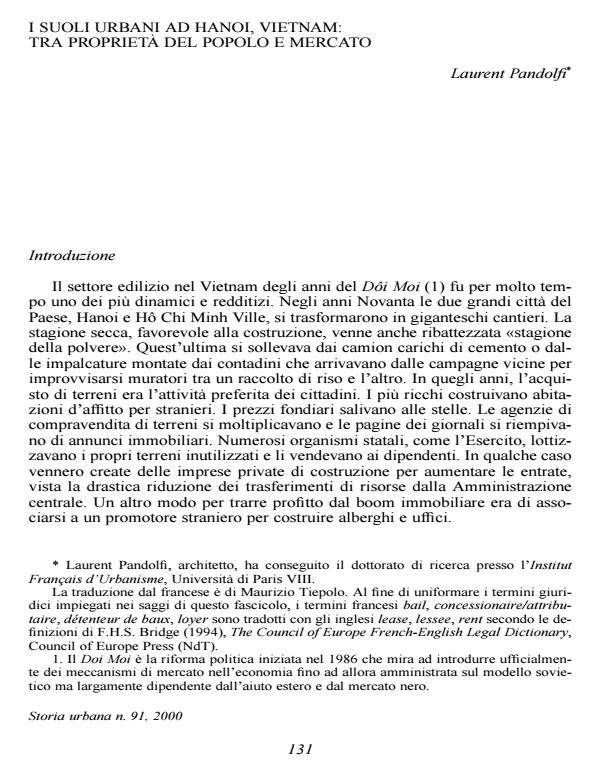I suoli urbani ad Hanoi, Vietnam: tra proprietà del popolo e mercato
Journal title STORIA URBANA
Author/s Laurent Pandolfi
Publishing Year 1 Issue 2000/91
Language Italian Pages 32 P. File size 445 KB
DOI
DOI is like a bar code for intellectual property: to have more infomation
click here
Below, you can see the article first page
If you want to buy this article in PDF format, you can do it, following the instructions to buy download credits

FrancoAngeli is member of Publishers International Linking Association, Inc (PILA), a not-for-profit association which run the CrossRef service enabling links to and from online scholarly content.
In 1986, Vietnam’s government introduced «market socialism» reforms in economy. In particular, it authorized the households to build and sell their own houses and it recognize the land use rights of households on the only land attached to their houses. Nevertheless, this decision led to black market transactions on the public and unused land as well as agricultural land on the urban fringe. Beside this, in 1994, the government replaced the administrative allocation of land to public enterprises and organizations by the rent of land without any right of transfer. In 1998, under pressure, the government couldn’t but modify the land law towards a leasehold system. This unstable legal framework favored the «land fever» on the black market. High demand for housing, investment in land and speculation are the main reasons of the land price rise. The high standard offices and hotel construction market develop frenetically in the early 1990’s before an overproduction crash. Joint venture with foreign investors were the more active on this market. Although they have to rent the land use rights to provinces at official (i.e. non market) price, they compete de facto on an invisible market to get most profitable land.
Laurent Pandolfi, I suoli urbani ad Hanoi, Vietnam: tra proprietà del popolo e mercato in "STORIA URBANA " 91/2000, pp , DOI: